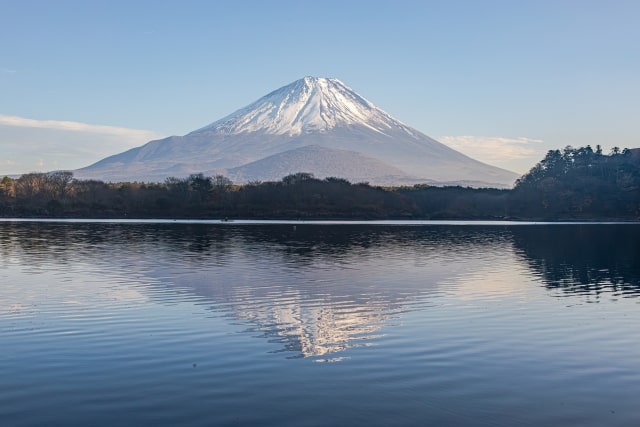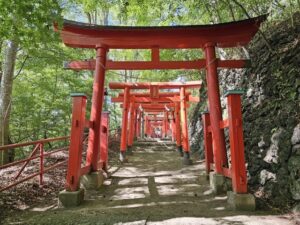This year, there has been a significant rise in the number of fatalities on Mount Fuji, Japan’s most iconic mountain. While it draws tourists from all over the world, this increase in deaths highlights serious safety concerns. Many climbers are poorly equipped, and issues such as inadequate regulations and the relatively low entrance fee are also contributing factors. Additionally, Japan’s cultural belief in mountain worship, where mountains are considered sacred spaces, adds another layer to the importance of preserving safety and respect for the environment. In this article, we will explore the current situation on Mount Fuji, compare it to other famous 3,000-meter+ mountains worldwide, and discuss potential solutions.
The Current State of Mount Fuji’s Regulations
Mount Fuji is a symbol of Japan, and its beauty attracts thousands of climbers annually, particularly during the summer season. However, despite its popularity, many climbers are unprepared, leading to fatal accidents. This year, there has been a notable increase in such incidents, largely due to climbers underestimating the difficulty of the mountain and climbing in inappropriate clothing and with insufficient gear.
Currently, there are minimal regulations for climbing Mount Fuji. Tourists are responsible for their own safety, and no mandatory checks on equipment or readiness are in place. The entrance fee is also relatively low compared to international standards, which may contribute to the lack of funding for adequate safety measures. For many tourists, climbing Mount Fuji may seem more like a tourist activity rather than a serious mountaineering experience.
Mountain Worship in Japan: The Sacredness of Mount Fuji
In addition to the safety concerns, it’s important to understand that Mount Fuji holds a special place in Japanese culture. Japan has a tradition of mountain worship, known as Shugendo, where mountains are seen as sacred spaces where gods reside. Mount Fuji, in particular, is revered as a sacred mountain, and many Japanese people believe it is important to preserve its purity and avoid desecrating it.
For centuries, pilgrims have climbed Mount Fuji not only for its scenic beauty but also as a spiritual journey. For those who hold this belief, the idea of underprepared tourists climbing in a disrespectful manner or leaving litter behind is deeply troubling. Many Japanese people would like to see stronger regulations, not only to protect climbers but also to maintain the sanctity of the mountain.
How Does Mount Fuji Compare to International Mountains?
When we compare Mount Fuji to other famous mountains over 3,000 meters, we see significant differences in how they are regulated. For example, the Matterhorn in Switzerland, Annapurna in Nepal, and Mount Cook in New Zealand all have much stricter safety measures in place. Climbers are often required to undergo equipment checks, and in some cases, hiring a guide is mandatory. These mountains also charge higher entrance fees, which are used to maintain safety infrastructure and provide rescue services.
In contrast, Mount Fuji’s relatively low entrance fee and lack of strict regulations create an environment where inexperienced climbers are more likely to take risks. This difference in approach highlights the need for Japan to reconsider how it manages safety on its most famous mountain.
The Importance of Tourist Education
In countries like Switzerland and Nepal, climbers are educated about the dangers of mountaineering before they begin their ascent. Guides and officials provide detailed safety briefings, and there is an emphasis on understanding the mountain environment, weather conditions, and appropriate equipment. This level of education helps to reduce accidents.
Unfortunately, Mount Fuji does not have a similar system in place. Many tourists, especially those from overseas, may not realize the dangers of climbing the mountain. Multilingual safety information, equipment rental stations, and clear guidelines about the risks involved could greatly reduce the number of accidents. It is crucial that both Japanese and international tourists are made aware of the potential dangers before setting foot on the mountain.
Solutions for Improving Safety on Mount Fuji
To improve safety on Mount Fuji, several measures could be introduced. First, mandatory equipment checks should be implemented to ensure that all climbers are properly prepared. During certain seasons, the requirement for certified guides could also be enforced, particularly for less experienced climbers.
Additionally, raising the entrance fee could help fund more robust safety measures, such as increased patrolling and the provision of safety gear at checkpoints. By using these funds to improve infrastructure, Mount Fuji could become a safer destination for climbers of all experience levels.
Finally, educating tourists about the spiritual and cultural significance of Mount Fuji could foster greater respect for the environment. Informing climbers about the importance of mountain worship in Japan and encouraging them to climb with a sense of responsibility would not only enhance safety but also protect the sanctity of this sacred mountain.
Conclusion
The rise in fatalities on Mount Fuji is a serious issue, caused by a combination of poorly prepared climbers, inadequate regulations, and a lack of understanding about the mountain’s risks. When compared to international mountains, it’s clear that Mount Fuji’s safety measures fall short. By implementing stricter regulations, raising entrance fees, and improving tourist education, Japan can help prevent further accidents while also preserving the cultural and spiritual significance of the mountain.
For both climbers and authorities, it’s important to remember that Mount Fuji is not just a tourist destination—it is a sacred mountain that deserves respect and care. By fostering a deeper appreciation for the mountain’s spiritual importance and improving safety measures, we can ensure that future generations can continue to enjoy and honor this iconic symbol of Japan.









Comments